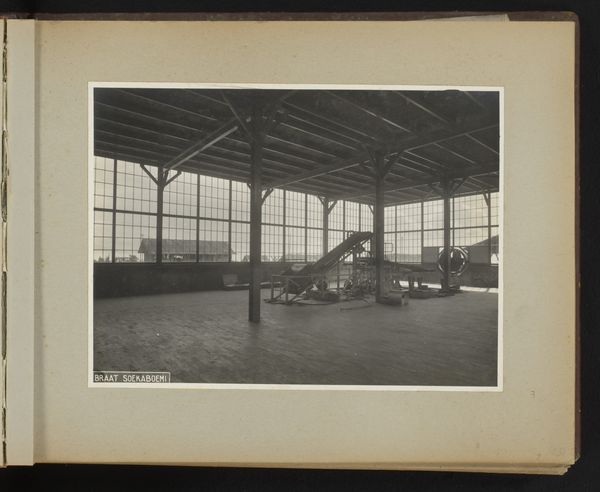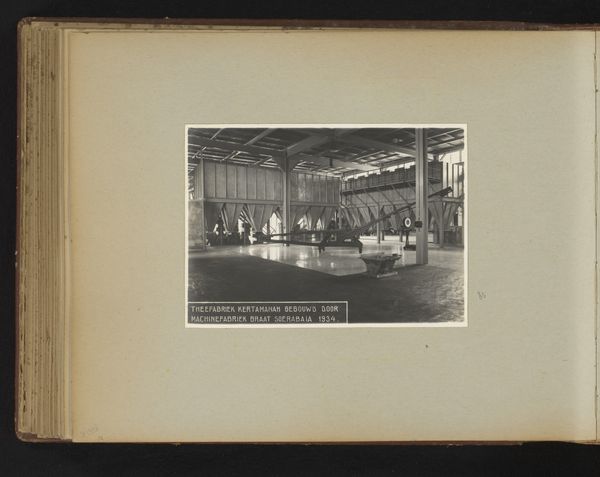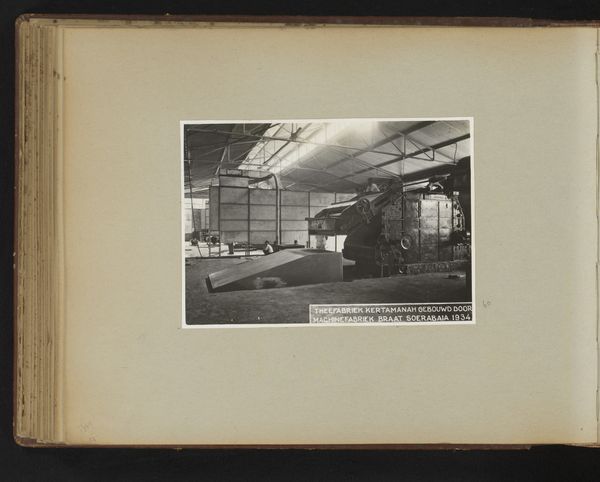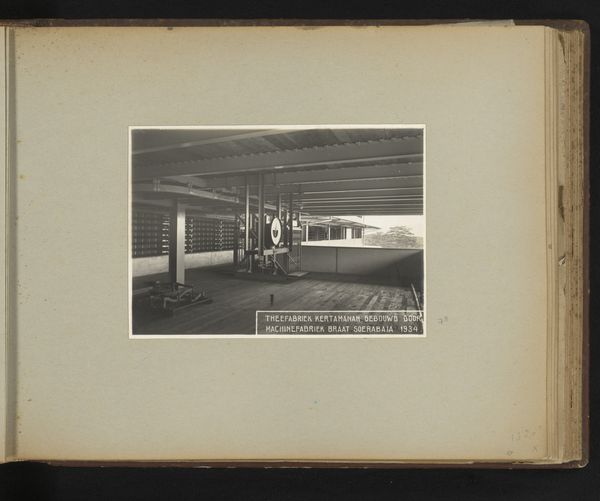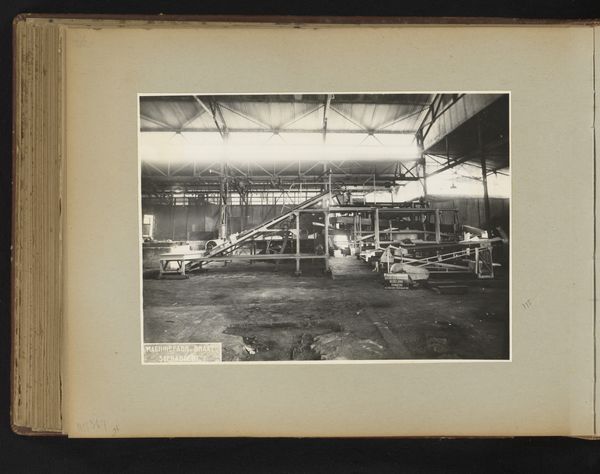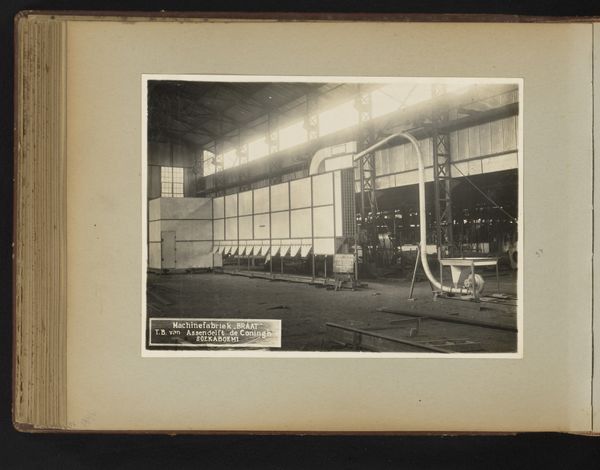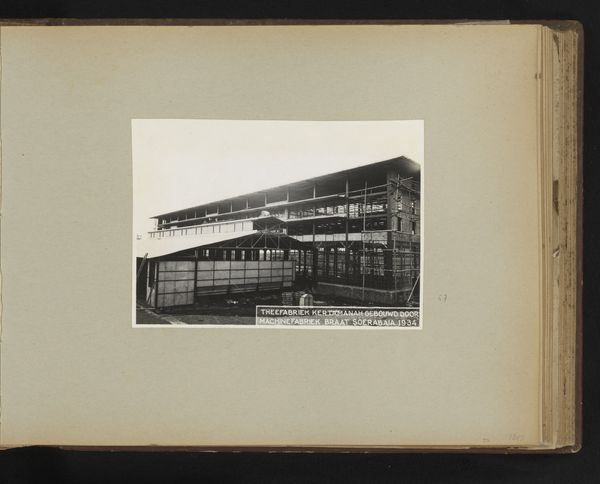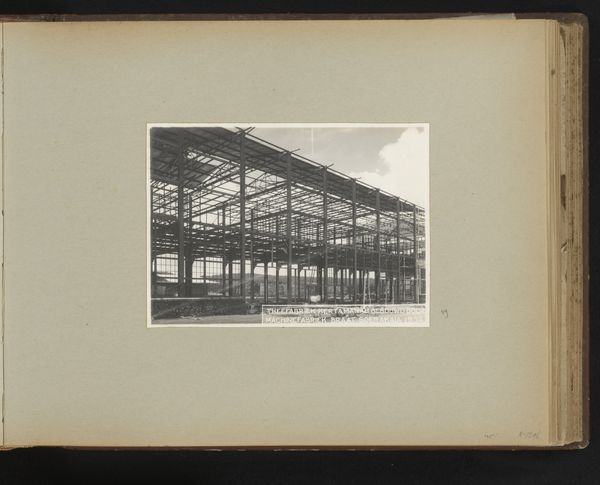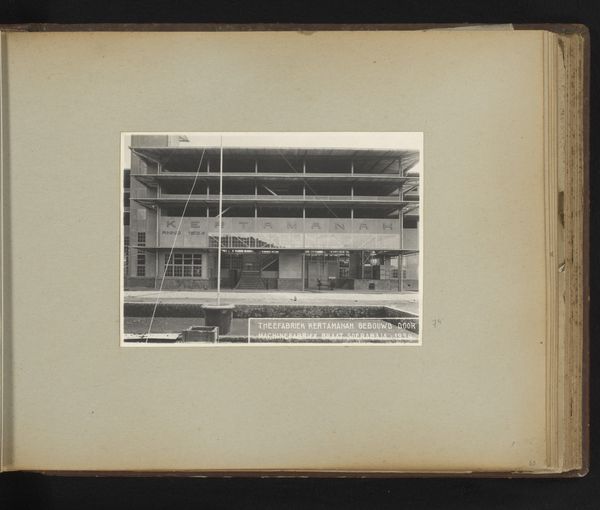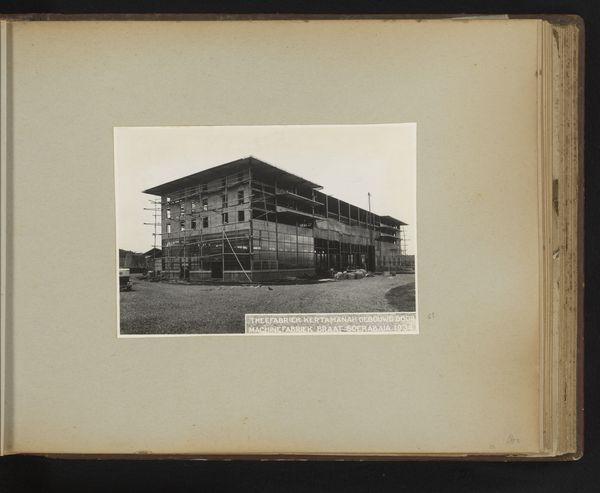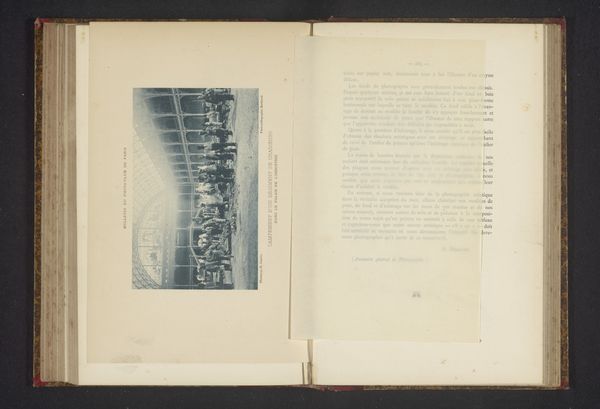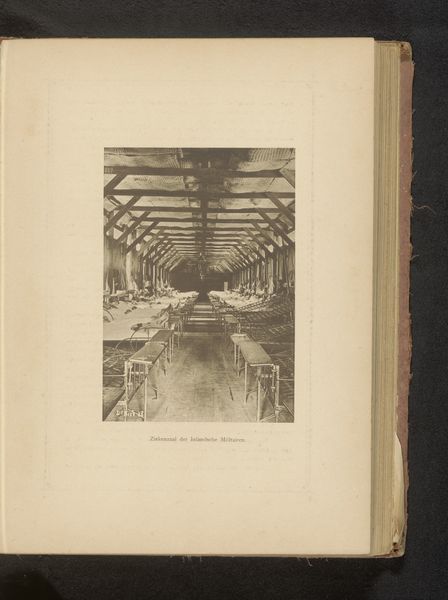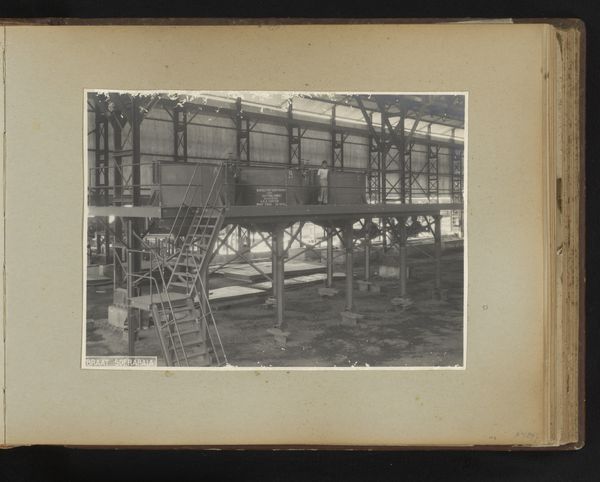
Theefabriek Kertamanah gebouwd door Machinefabriek Braat Soerabaia 1934 1934
0:00
0:00
anonymous
Rijksmuseum
print, photography
# print
#
photography
#
cityscape
#
paper medium
#
modernism
Dimensions: height 123 mm, width 172 mm, height 250 mm, width 320 mm
Copyright: Rijks Museum: Open Domain
Editor: This photograph, "Theefabriek Kertamanah gebouwd door Machinefabriek Braat Soerabaia 1934" from 1934, presents a spacious factory interior. It's striking how empty and quiet the space appears, almost like a stage set. What can you tell me about this work? Curator: The image captures more than just an empty factory; it's a potent symbol of Dutch colonial industrial ambition in Java during the 1930s. The very architecture speaks of control, efficiency, and the imposition of European modernity onto Indonesian landscapes. Notice how the photographic medium itself, in its crisp, objective depiction, reinforces a certain narrative of progress and order. Editor: So, beyond the architectural documentation, it reflects the larger power dynamics at play? Curator: Precisely. This isn’t just about a building. It's about the exploitation of resources, both natural and human. The emptiness might also suggest the human absence – or erasure – inherent to the colonial project. Consider how this factory's output benefited the colonizer at the potential expense of the local population and its traditions. What labour practices might have occurred within its walls? Editor: That really shifts how I see it. I was initially focused on the geometric shapes, but now I'm thinking about the social impact. It feels less like a simple industrial photo and more like an accusation. Curator: Exactly! Recognizing the multifaceted layers of history, power, and representation makes us critically evaluate the supposed "neutrality" of such images. It’s important to continuously engage with these visual documents and their ideological underpinnings. Editor: Thank you. I now appreciate the critical importance of situating even seemingly benign photographs within their complex sociopolitical frameworks. Curator: It's a crucial approach to take in analyzing any artwork, particularly those from colonial contexts.
Comments
No comments
Be the first to comment and join the conversation on the ultimate creative platform.
